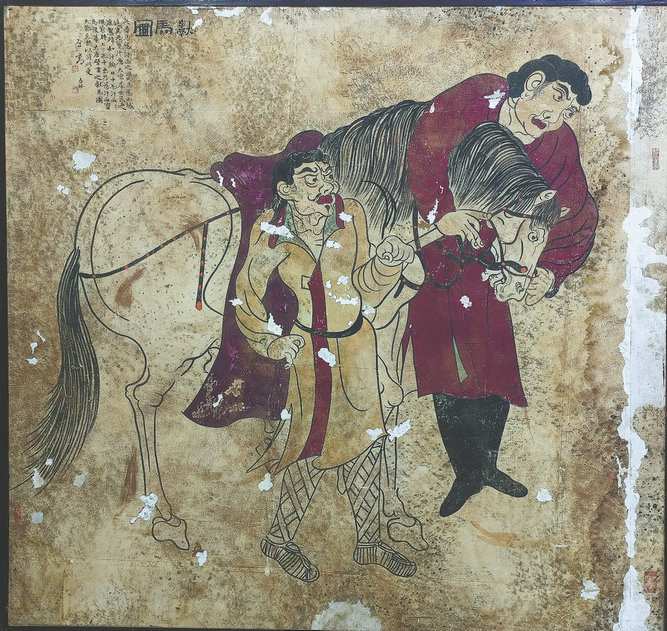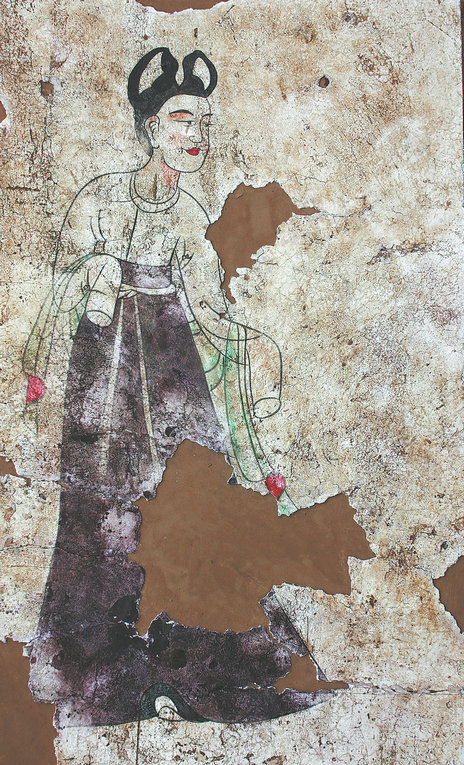

For example, he tried copying a mural from the tomb of concubine Wei in 1991. At first, he simply imitated the patterns but always found his work unsatisfactory. Since he had limited time for painting, he felt anxious and tried to calm himself.
Then he put aside his painting brush, stood in front of the original mural, and stared at it carefully, trying to understand the story it told.
"It seems to be a guard of honor with seven people holding flags. They seemed to behave naturally and everyone's emotions were precisely portrayed. I put myself in their shoes, thinking what I would do and feel if I were a member of the team," says Gao.

After close observation, he realized it described not a guard of honor in a working state but having a work break, possibly before or after receiving envoys. Amid this break, some engaged in conversation, others surveyed their environment, and a few appeared lost in contemplation. The intricate details allowed for a glimpse into the inner thoughts of each individual, he says.
"A seemingly ordinary moment, immortalized by a painter's brush on the wall, evokes a sense of enchantment, transporting you into the vivid tapestry of life during the Tang Dynasty," says Gao.
That morning, he woke at 3 am and went to the tomb to continue reading the mural until 5 am. After having breakfast, he began painting again, this time confident that he had seized the mural's essence.
"When we replicate murals, it's not a simple imitation. It's very difficult to make your copy approach the temperament of the original work, requiring the ability to truly understand the murals and Tang Dynasty culture, which comes from practice and experience," says Gao.